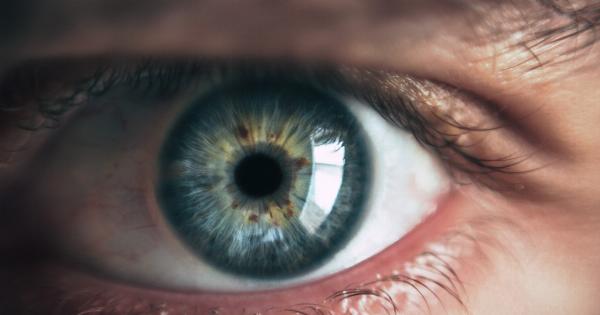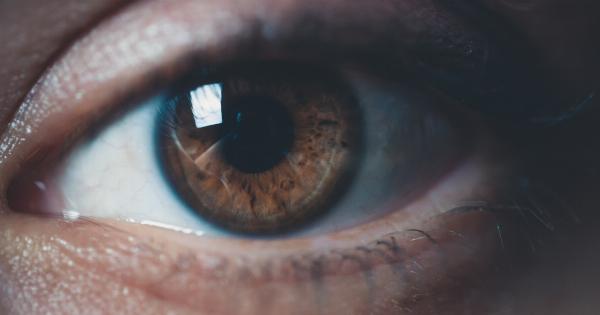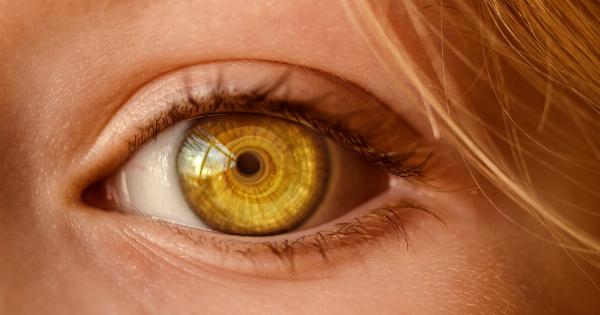Blepharitis is a common eye condition that affects the eyelids and the surrounding skin. It is characterized by redness, swelling, itchiness, and irritation of the eyelids.
This condition can be caused by various factors, but one of the primary culprits behind blepharitis is bacteria. In this article, we will delve into the bacterial causes of blepharitis and explore how they contribute to the development and progression of this eye condition.
The Role of Bacteria in Blepharitis
Bacteria play a crucial role in the development of blepharitis. The eyelids and the surrounding skin are home to several types of bacteria, including Staphylococcus species and Streptococcus species.
Under normal circumstances, these bacteria exist in harmony with the body and do not cause any harm. However, certain factors can disrupt this balance, leading to bacterial overgrowth and subsequent inflammation.
Staphylococcus and Streptococcus: The Most Common Culprits
Staphylococcus and Streptococcus are two of the most commonly found bacteria on the skin and eyelids. These bacteria are opportunistic pathogens, meaning they can take advantage of favorable conditions to thrive and cause infection.
When there is an overgrowth of these bacteria on the eyelids, it can lead to a condition known as anterior blepharitis.
Anterior blepharitis is primarily caused by Staphylococcus aureus, a strain of Staphylococcus bacteria. This particular bacterium produces enzymes and toxins that can cause irritation and inflammation of the eyelids.
The presence of Staphylococcus aureus can also lead to the formation of crusts and scales on the eyelashes, further exacerbating the symptoms of blepharitis.
On the other hand, posterior blepharitis is commonly associated with an overgrowth of bacteria in the meibomian glands, which are responsible for producing the oily component of tears.
These glands can become clogged by bacteria, leading to posterior blepharitis. The most frequently implicated bacteria in this type of blepharitis are Staphylococcus epidermidis and Propionibacterium acnes.
Bacterial Biofilms and Blepharitis
Bacteria can form biofilms on the surface of the eyelids, contributing to the chronicity of blepharitis. Biofilms are complex communities of bacteria that adhere to surfaces and are protected by a matrix of protein and polysaccharide substances.
These biofilms provide an ideal environment for bacteria to multiply and evade the immune system.
Biofilms play a significant role in the persistence of blepharitis symptoms, as they can resist conventional treatments such as antibiotics and eyelid hygiene measures.
The biofilm’s protective matrix prevents drugs from effectively penetrating and eradicating the bacteria, allowing them to continue causing inflammation and discomfort in the eyelids.
Contributing Factors to Bacterial Overgrowth
Several factors can contribute to the overgrowth of bacteria on the eyelids, leading to the development of blepharitis. These include:.
- Poor eyelid hygiene: Inadequate cleansing of the eyelids can allow bacteria to accumulate and thrive.
- Meibomian gland dysfunction: Dysfunction of the meibomian glands can disrupt the normal flow of oil, leading to a buildup of bacteria.
- Dry eye syndrome: Insufficient tear production can create an environment conducive to bacterial growth.
- Eyelash mites: Demodex mites are microscopic organisms that live in the hair follicles of eyelashes. A high population of these mites can contribute to blepharitis.
- Allergies: Allergic reactions can trigger inflammation and increase the risk of bacterial overgrowth.
Treatment Approaches for Bacterial Blepharitis
The treatment of bacterial blepharitis usually involves a combination of eyelid hygiene practices and medical interventions. Some of the common treatment approaches include:.
- Warm compresses: Applying warm compresses to the eyes can help soften the crusts and scales, making it easier to remove them.
- Eyelid hygiene: Regular and proper cleansing of the eyelids can help control bacterial overgrowth and reduce inflammation. This involves gentle washing with a mild, tear-free cleanser or diluted baby shampoo.
- Antibiotics: Topical or oral antibiotics may be prescribed to target the bacteria causing blepharitis. However, as mentioned earlier, their efficacy against biofilms may be limited.
- Lid scrubs: Using specific lid cleansing products or wipes can aid in the removal of debris, bacteria, and biofilms from the eyelids.
- Anti-inflammatory medications: In cases where inflammation is significant, the use of corticosteroid eye drops or ointments may be recommended to alleviate symptoms.
Prevention and Long-term Management
Prevention and long-term management play vital roles in reducing the recurrence and severity of bacterial blepharitis. Some recommendations for preventing and managing blepharitis include:.
- Maintaining good eyelid hygiene: Regular cleaning of the eyelids can help prevent bacterial overgrowth.
- Using warm compresses: Applying warm compresses to the eyes can help maintain the health of the meibomian glands and minimize the risk of obstruction.
- Avoiding eye makeup: Some cosmetic products can irritate the eyes and exacerbate blepharitis symptoms. It is advisable to avoid using eye makeup during flare-ups.
- Using artificial tears: Lubricating eye drops or artificial tears may help alleviate dry eye symptoms and minimize bacterial growth.
- Seeking professional help: Regular eye examinations can help detect and manage blepharitis before it becomes severe. Eye care professionals can provide personalized treatment plans based on the individual’s specific needs.
Conclusion
Bacteria play a significant role in the development and persistence of blepharitis. Understanding the bacterial causes of this condition is crucial for effective management and prevention.
By addressing bacterial overgrowth through proper eyelid hygiene practices and targeted treatments, individuals can experience relief from the uncomfortable symptoms of blepharitis and improve their overall ocular health.
























